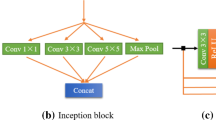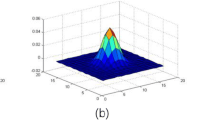Abstract
Due to the characterization capabilities of deep features, image quality assessment (IQA) methods based on convolutional neural networks (CNNs) have been proposed. However, the existing CNN-based IQA does not make full use of deep features. So, we propose a novel no-reference image quality assessment based on disentangled representation (DRIQA-NR), which decomposes the deep features extracted from distorted images into content features and distortion information features. The content features are used to restore the input image. To eventually predict the quality of the image, features extracted from the restored image and the distorted image are merged with the distortion information feature. In addition, the distortion information features can also be used to improve the performance of full-reference image quality assessment. Experiments on LIVE, CSIQ and TID2013 suggest that the method proposed achieves favorable performance against other methods, with higher average Spearman’s rank-order correlation coefficient, Pearson’s linear correlation coefficient, Kendall rank-order correlation coefficient values and lower root mean square error.







Similar content being viewed by others
References
Zhou, W., Bovik, A.C., et al.: Image quality assessment: from error visibility to structural similarity. IEEE Trans. Image Process. 13(4), 600–612 (2004)
Bosse, S., et al.: Deep neural networks for no-reference and full-reference image quality assessment. IEEE Trans. Image Process. 27(1), 206–219 (2018)
Seo, S., Ki, S.: Deep HVS-IQA Net: Human Visual System Inspired Deep Image Quality Assessment Networks (2019). arXiv:1902.05316
Narwaria, M., Lin, W., et al.: Fourier transform-based scalable image quality measure. IEEE Trans. Image Process. Publ. IEEE Signal Process. Soc. 21(8), 3364–3377 (2012)
Ma, L., et al.: Reduced-reference image quality assessment using reorganized DCT-based image representation. IEEE Trans. Multimed. 13(4), 824–829 (2011)
Mittal, A., Moorthy, A.K., et al.: No-reference image quality assessment in the spatial domain. IEEE Trans. Image Process. Publ. IEEE Signal Process. Soc. 21(12), 4695 (2012)
Liu, X., Weijer, J., et al.: Rankiqa: learning from rankings for no-reference image quality assessment. In: Proceedings of the IEEE International Conference on Computer Vision, pp. 1040–1049 (2017)
Lin, K.Y., Wang, G.: Hallucinated-IQA: no-reference image quality assessment via adversarial learning. In: 2018 IEEE/CVF Conference on Computer Vision and Pattern Recognition, pp. 732–741 (2018)
Krizhevsky, A., et al.: ImageNet classification with deep convolutional neural networks. In: 2012 Conference on Neural Information Processing Systems, pp. 1097–1105 (2012)
Goodfellow, I.J., Pouget-Abadie, J., et al.: Generative adversarial nets. In: 2014 Conference on Neural Information Processing Systems, pp. 2672–2680 (2014)
Bromley, J., Guyon, I., et al.: Signature verification using a “Siamese” time delay neural network. In: 7th Annual Neural Information Processing Systems Conference, pp. 737–744 (1993)
Hughes, L.H., Schmitt, M., et al.: Identifying corresponding patches in SAR and optical images with a pseudo-Siamese CNN. IEEE Geosci. Remote Sens. Lett. 15(5), 784–788 (2018)
Zhu, J., Park, T., et al.: Unpaired image-to-image translation using cycle-consistent adversarial networks. In: 2017 IEEE International Conference on Computer Vision, pp. 2242–2251 (2017)
Zhang, J., Sclaroff, S., et al.: Minimum barrier salient object detection at 80 Fps. In: 2015 IEEE International Conference on Computer Vision, pp. 1401-1412 (2015)
Bae, S.H., Kim, M.: A DCT-based total JND profile for spatio-temporal and foveated masking effects. IEEE Trans. Circuits Syst. Video Technol. 27(6), 1 (2017)
Bae, S.H., Kim, J., et al.: HEVC-based perceptually adaptive video coding using a DCT-based local distortion detection probability model. IEEE Trans. Image Process. 25(7), 3343–3357 (2016)
Saad, M.A., Bovik, A.C., et al.: Blind image quality assessment: a natural scene statistics approach in the DCT domain. IEEE Trans. Image Process. 21(8), 3339–3352 (2012)
Le, K., Peng, Y., et al.: Simultaneous estimation of image quality and distortion via multi-task convolutional neural networks. In: 2015 IEEE International Conference on Image Processing, pp. 2791–2795 (2015)
Ma, K., Liu X., et al.: Blind image quality assessment by learning from multiple annotators. In: 2019 IEEE International Conference on Image Processing (ICIP) (2019)
Xia, W., et al.: Domain fingerprints for no-reference image quality assessment. IEEE Trans. Circuits Syst. Video Technol. 31(4), 1332–1341 (2021)
Zhu, H., Li L., et al.: MetaIQA: deep meta-learning for no-reference image quality assessment. In: 2020 IEEE/CVF Conference on Computer Vision and Pattern Recognition (CVPR), pp. 14131–14140 (2020)
Weixia, Z.,Kede M., et al.: Task-Specific Normalization for Continual Learning of Blind Image Quality Models (2021). arXiv:2107.13429
Lu, B., Chen, J.C., et al.: Unsupervised domain-specific deblurring via disentangled representations. In: 2019 IEEE/CVF Conference on Computer Vision and Pattern Recognition, pp. 10225–10234 (2019)
Du, W., Chen, H., et al.: Learning invariant representation for unsupervised image restoration. In: 2020 IEEE/CVF Conference on Computer Vision and Pattern Recognition, pp. 14471–14480 (2020)
Wang, L., Wu, Q., et al.: Blind tone-mapped image quality assessment and enhancement via disentangled representation learning. In: 2020 Asia-Pacific Signal and Information Processing Association Annual Summit and Conference (APSIPA ASC), pp. 1096–1102 (2020)
Bianco, S., et al.: Disentangling image distortions in deep feature space. Pattern Recogn. Lett. 148, 128–135 (2021)
Bao, J., et al.: Towards open-set identity preserving face synthesis. In: 2018 IEEE/CVF Conference on Computer Vision and Pattern Recognition, pp. 6713–6722 (2018)
Min, X., Gu, K., et al.: Blind quality assessment based on pseudo-reference image. IEEE Trans. Multimed. 20(8), 2049–2062 (2018)
Ponomarenko, M., et al.: Color image database HTID for verification of no-reference metrics: peculiarities and preliminary results. In: 2021 9th European workshop on visual information processing (EUVIP), pp. 1–6 (2021)
Author information
Authors and Affiliations
Corresponding author
Additional information
Publisher's Note
Springer Nature remains neutral with regard to jurisdictional claims in published maps and institutional affiliations.
Rights and permissions
About this article
Cite this article
Ye, Z., Wu, Y., Liao, D. et al. DRIQA-NR: no-reference image quality assessment based on disentangled representation. SIViP 17, 661–669 (2023). https://doi.org/10.1007/s11760-022-02273-5
Received:
Revised:
Accepted:
Published:
Issue Date:
DOI: https://doi.org/10.1007/s11760-022-02273-5




